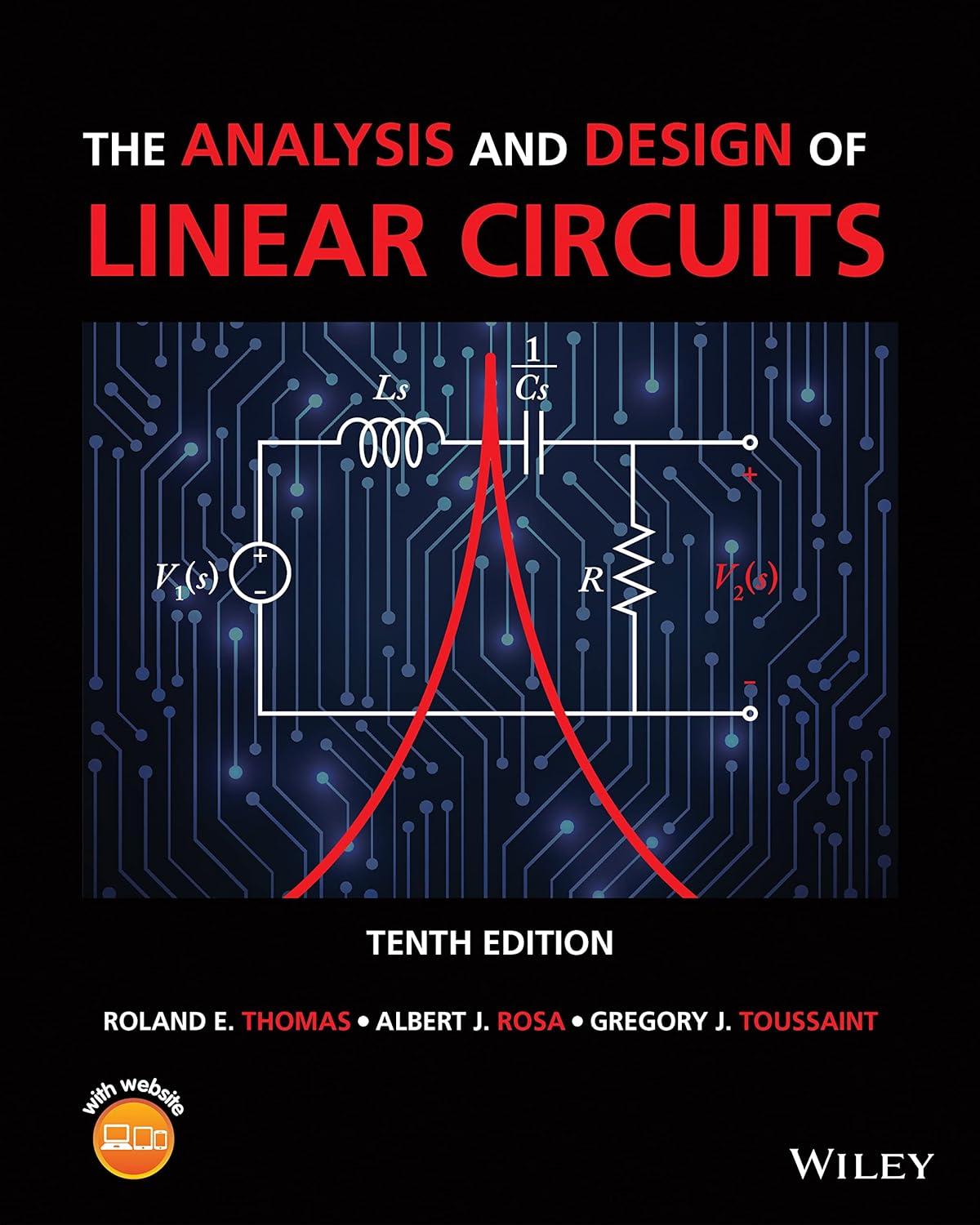The circuit in Figure 149(b) has a high-pass transfer function given in Eq. (1411) and repeated below
Question:
The circuit in Figure 14–9(b) has a high-pass transfer function given in Eq. (14–11) and repeated below
\[
\begin{aligned}
T(s) & =\frac{V_{2}(s)}{V_{1}(s)} \\
& =\frac{\mu R_{1} R_{2} C_{1} C_{2} s^{2}}{R_{1} R_{2} C_{1} C_{2} s^{2}+\left(R_{2} C_{2}+R_{1} C_{1}+R_{1} C_{2}-\mu R_{2} C_{2}ight) s+1}
\end{aligned}
\]
In Section 14-2 , we developed equal-element and unity-gain design methods for this circuit. This problem explores an equaltime constant design method. Using \(R_{1} C_{1}=R_{2} C_{2}\) and \(\mu=2\), develop a method of selecting values for \(C_{1}, C_{2}, R_{1}\), and \(R_{2}\). Then select values so that the filter has a time constant of \(1 \mu \mathrm{s}\) and a \(\zeta\) of 0.25 . Use MATLAB to plot the filter's Bode diagram.
Step by Step Answer:

The Analysis And Design Of Linear Circuits
ISBN: 9781119913023
10th Edition
Authors: Roland E. Thomas, Albert J. Rosa, Gregory J. Toussaint





